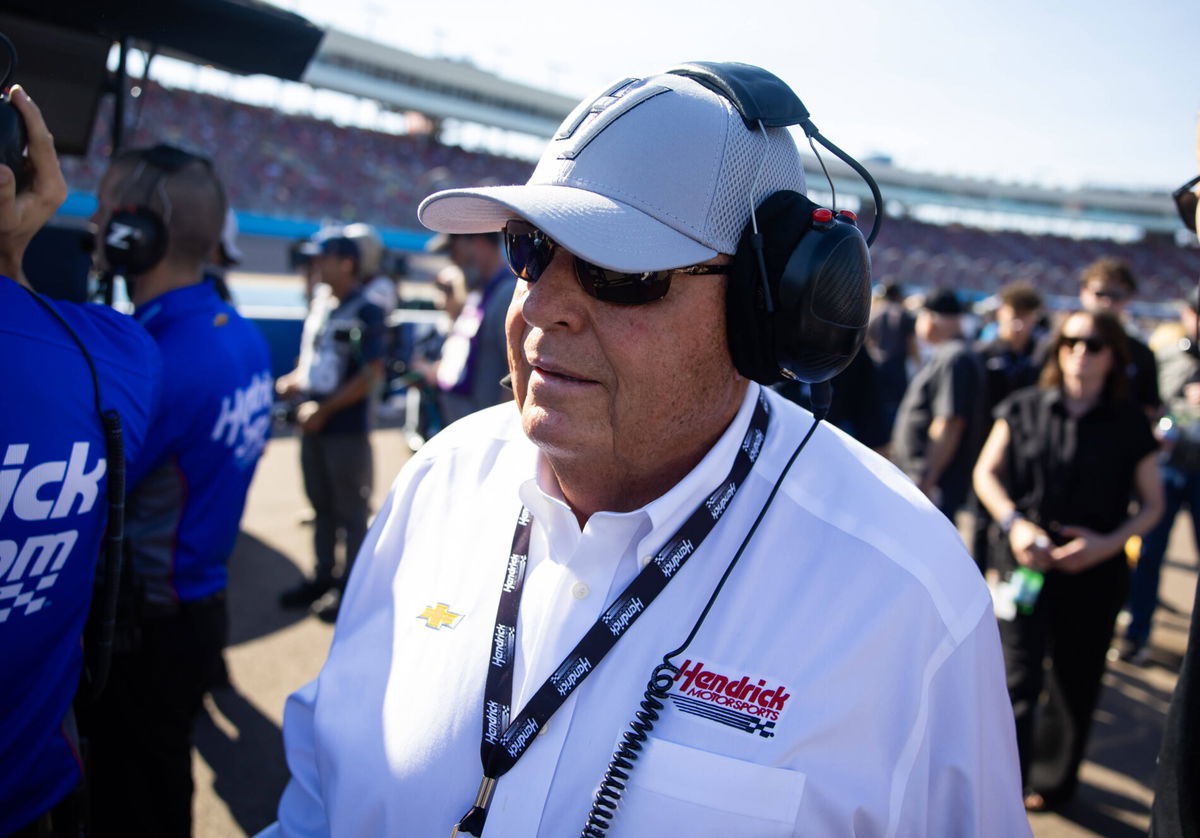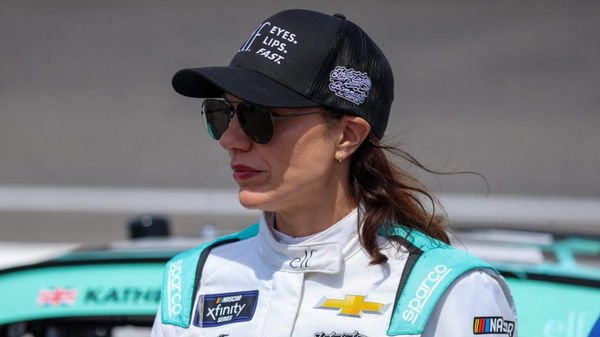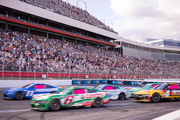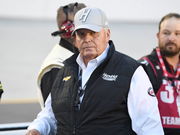
Imago
NASCAR, Motorsport, USA Cup Series Championship Qualifying Nov 4, 2023 Avondale, Arizona, USA NASCAR Cup Series team owner Rick Hendrick during qualifying for the NASCAR Championship Race at Phoenix Raceway. Avondale Phoenix Raceway Arizona USA, EDITORIAL USE ONLY PUBLICATIONxINxGERxSUIxAUTxONLY Copyright: xMarkxJ.xRebilasx 20231104_mjr_su5_018

Imago
NASCAR, Motorsport, USA Cup Series Championship Qualifying Nov 4, 2023 Avondale, Arizona, USA NASCAR Cup Series team owner Rick Hendrick during qualifying for the NASCAR Championship Race at Phoenix Raceway. Avondale Phoenix Raceway Arizona USA, EDITORIAL USE ONLY PUBLICATIONxINxGERxSUIxAUTxONLY Copyright: xMarkxJ.xRebilasx 20231104_mjr_su5_018
The old NASCAR was simple: if you wanted to get faster, you tested. From the wide-open “Preseason Thunder” days at Daytona to busy midweek laps at Charlotte and Rockingham, teams could grind out speed with virtually no limits, long before the Next Gen era tightened the screws. Even after the 2008 clampdown, the sport still went on with organized test windows and off-season shakedown, until sweeping restrictions and a 2020 ban on non-Next Gen testing reset the culture around seat time. But if testing built legends yesterday, who is shaping the rules of engagement today?
Watch What’s Trending Now!
Enter 2025, where on-track reps are precious, the rulebook is precise, and the margin got error is razor-thin. Hendrick Motorsports has lived both the power and the peril of this environment. Chase Elliott’s 38th-place finish at Richmond Raceway has sharpened scrutiny, even as HMS still finds ways to claw back points on tough days. Layer in the sport’s tweaked policies, and you get a season where every lap, whether in a garage or under green, matters more than ever, especially for powerhouse outfits walking the fine line between innovation and overreach. And that is exactly where Live Fast Motorsports’ co-owner B.J. McLeod’s blunt assessment lights the fuse on a bigger debate.
ADVERTISEMENT
Rick Hendrick at the center of NASCAR’s testing tradition fallout
In a recent episode of The Racing Writer’s Podcast, Kelly Crandall pressed McLeod on-air about whether extra seat time could accelerate Katherine Legge’s learning curve in the Next Gen car. Speaking about whether NASCAR’s testing rules box out smaller, open teams from giving a newcomer that crucial practice, McLeod’s take on this was candid. “I think they’re going down the road of the all-star provisional, or whatever they call it at the beginning of the year,” said McLeod.
“You’re allowed to test if you get that provisional. Like, if you’re qualified for what they say for a one-off event, you want to go test it, got it.” NASCAR did overhaul parts of the 2025 rule book, creating an Open Exemption Provisional that can expand the field to 41 for select races and tweaking organizational-testing language. Still, none of it equates to broad, unlimited practice time for developmental drivers.
Those updates were frames to manage entry logistics and guardrail costs, not open the floodgates to testing programs. “So they’re trying to figure out, I feel like this is not a conversation with NASCAR, so it’s just my opinion,” he said. “Looking from the outside, I feel like they’re trying to figure out how to let anyone, like Katherine, who’s coming in new to the sport, trying to get used to the next-gen car.” Legge has ramped up her stock-car slate in 2025, adding Cup and Xfinity starts with Live Fast Motorsports and Jordan Anderson Racing, yet she is largely learning on live fire on race weekends. Her partials 2025 Xfinity results show how costly the lack of pre-race work can be, including accidents at Rockingham and Talladega, plus 30th-place finishes while finding pace.
ADVERTISEMENT
The driver development benefit he is describing is obvious; the rulebook just isn’t built to prioritize it. “I think they’re wanting to make it where you can test, but the one thing that NASCAR always has had a problem with, every team owner and every person at NASCAR is very good at pushing the rules,” McLeod continued. “And it’s like, the second you make it okay for somebody to test if they’ve got an open car, and this person has this little amount of experience, right? Well, then you’ll have the winning Xfinity drivers that have never ranked up that are all of a sudden driving an open car for Hendrick… It just opens up a can of worms that NASCAR, they can’t let happen, right?” That fear isn’t theoretical. Entry rules have already been a legal and sporting minefield in 2025, with NASCAR adjusting open-entry provisions amid high-profile charter litigation to protect competitive balance and keep powerhouse operations from gaming the system.
ADVERTISEMENT

The same slippery slope is why testing stays tightly controlled. Once big teams find a legal pathway, they will weaponize it. “Everybody can test. Well, you go do that, but now you’re spending millions more a year testing. We already have a hard time keeping people because we have a very long schedule that restricts your family time, and you’re at home under your own roof time a tremendous amount,” he said. “It’s not fair to the people. It’s not fair to the families… but it just doesn’t make sense, number one to me, an infrastructure standpoint of your people… And then number two would be financial. It just isn’t worth it when the racing product will see no gain.” The calendar is already punishing. 36 points races plus special events and, in 2025, an In-Season Tournament stretch, and the recent testing-bulletin tweaks were incremental, not an invitation to add midweek programs that drain crew bandwidth.
ADVERTISEMENT
For small open teams like Live Fast, every extra test day is a staffing puzzle; for charter heavyweights, it’s another expensive arms race. “Katherine would be better if she could go test. Every one of these races we went to, her first words were like, ‘I wish we could have started there, right’… So now next year, maybe we unload there the next time we go back,” McLeod opined. “But, I understand NASCAR standpoint… And I just don’t see a realistic way to make that possible on more than a one-off stand… You can do it once with one driver and it keeps other teams from firing up and figuring out how to manipulate it every week to have somebody testing. But it passed that to be a real benefit.” The incident in Legge’s Phoenix debut, heat-induced trouble in Mexico City that literally melted a show, and gradual improvement at road courses where her background helps, exactly the kind of versatility that a controlled test would smooth out.
For now, NASCAR’s one-off allowances and working tweaks thread the needle between development needs and a hard cap on costs. It helps a little, but it won’t deliver the wholesale practice cadence that would most benefit a late-arriving veteran like Legge.
Top Stories
New Charter Deal Triggers ‘Financial Frenzy’ as NASCAR Teams Set for Massive Payday

Rick Hendrick Strikes Fear in NASCAR Fans With Chevy’s New “Illegal” Car

Major Blow to Trackhouse Racing as Team Penske Steals Veteran Crew Chief Back in Unexpected Move

Martin Truex Jr’s Former Crew Chief Ends 12-Year Fight In Huge Personal Announcement

Chevy Team to Enter Kyle Larson’s Series as Michael Jordan Ends NASCAR’s Monopoly

ADVERTISEMENT
Inside Rick Hendrick’s secret to staying sharp under pressure
Kyle Larson’s struggles at Watkins Glen and Iowa, marked by a last-place finish and a P28 result, have raised eyebrows heading into the playoffs. From mechanical failures to inconsistent runs, Larson’s No. 5 team has faced more downs than usual. Yet, according to Kevin Harvick, these setbacks aren’t a reason for panic inside HMS.
Speaking on his Happy Hour podcast, Harvick explained what makes HMS different when adversity hits. “This is a typical Hendrick Motorsports kind of attitude. And you heard it from William Byron last week; after they won that race, they have a great way of managing the downs. To keep everybody motivated and engaged. No matter how many times that 5 car has been in the garage, you see those guys under the hood digging and trying to fix the car to get back out on the racetrack. And now they’ve gained two or three points by getting the fastest lap,” Harvick said.
That culture of relentless effort and sharp leadership is why Harvick believes HMS will rebound quickly. “I see that it is easier to motivate the guys around. But HMS has a great way of navigating the downs to be able to keep the people engaged and motivated, some from just good business practices, more than anything. Good management and good leadership. I think they’ll show back up, but it hasn’t been great,” he added. With a 6th place finish at Richmond for Larson and Daytona ahead, Hendrick’s trademark resilience may just pay off once again.
ADVERTISEMENT
ADVERTISEMENT
ADVERTISEMENT
ADVERTISEMENT

